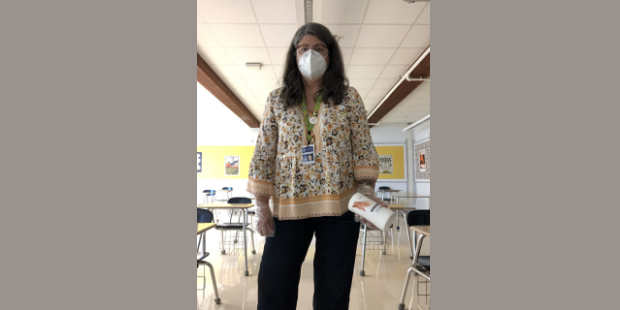Some students are returning to Connecticut schools this week, others go back next week—Litchfield students were among the first in the state and headed back to school last Wednesday.
Local president Lynn Rice Scozzafava says that her students have so far been good about following safety protocols, but that this school year has been uniquely overwhelming and stressful for teachers.
“Generally speaking, our membership is exhausted, overwhelmed, and anxious,” Scozzafava says. “It’s wishful thinking that teachers are doing okay.”
Scozzafava says that a former student reached out to ask, “What can I do for you?” She recommended, “Send a note to your local school with words of support. We need support—we’re not okay.”
Teachers in Litchfield have been lucky, Scozzafava says, in that students are glad to be back and have some sense of normalcy and have therefore been following mask rules without a problem. They use the hand sanitizer when they enter a classroom and wipe down their desks and chairs as required when they leave.
With all of the extra safety measures in place, Scozzafava says that everything takes three times longer to prepare or do.
A student came into her room one morning wearing a neck gaiter instead of a mask, unaware that those were recently taken off the school’s list of acceptable face coverings. The school requires students to fill out a contact tracing log whenever they visit a location in the school that’s not part of their regular schedule, so the student filled out that log to go to the nurse’s office to request a mask. The nurse wasn’t there, so the student went to the main office, but the contact tracing log didn’t record that.
“The whole thing took 10 minutes rather than the three a similar situation would have taken in a normal year,” says Scozzafava. “These are all really important steps we’re taking, but it’s time consuming.”
She adds, “We’re all learning as we go. We’ve had questions that administration couldn’t have anticipated, and I think the same thing will happen with kids in the classroom.”
Scozzafava says the district has had some reductions in staff between last year and this fall, leading to some classes of up to 25 students. Students are spaced six feet apart when feasible.
“It’s odd to have kids in rows all facing forward. In English class we usually have tables and the kids work in teams a lot,” Scozzafava explains.
A small percentage of the district’s students chose to learn remotely, and most of those students are at the elementary level. Scozzafava wonders if more secondary students will choose the remote option as the weeks progress and they realize how different this year of in-person learning is going to be.
Being back in their school buildings is clearly important for some students’ emotional health though, even in these unprecedented times.
“I had a student say they are so glad to be here because they really hate being home,” Scozzafava says.
To teachers in districts that have yet to welcome students back into the classroom Scozzafava recommends, “Plan for the worst and hope for the best. That’s a good mantra to have.”
She continues, “Assume everything will take far longer—whether that’s your own work or when you’re with your class. Ask kids to be patient. Patience and grace are the two words I’m using. Usually in the classroom I start with respect and honesty, this year it’s patience and grace.”
Scozzafava says this year is about being human first and a teacher second. “The things that you thought mattered don’t matter. Rigor doesn’t matter, content isn’t our most important focus. We have far greater issues at hand.”







